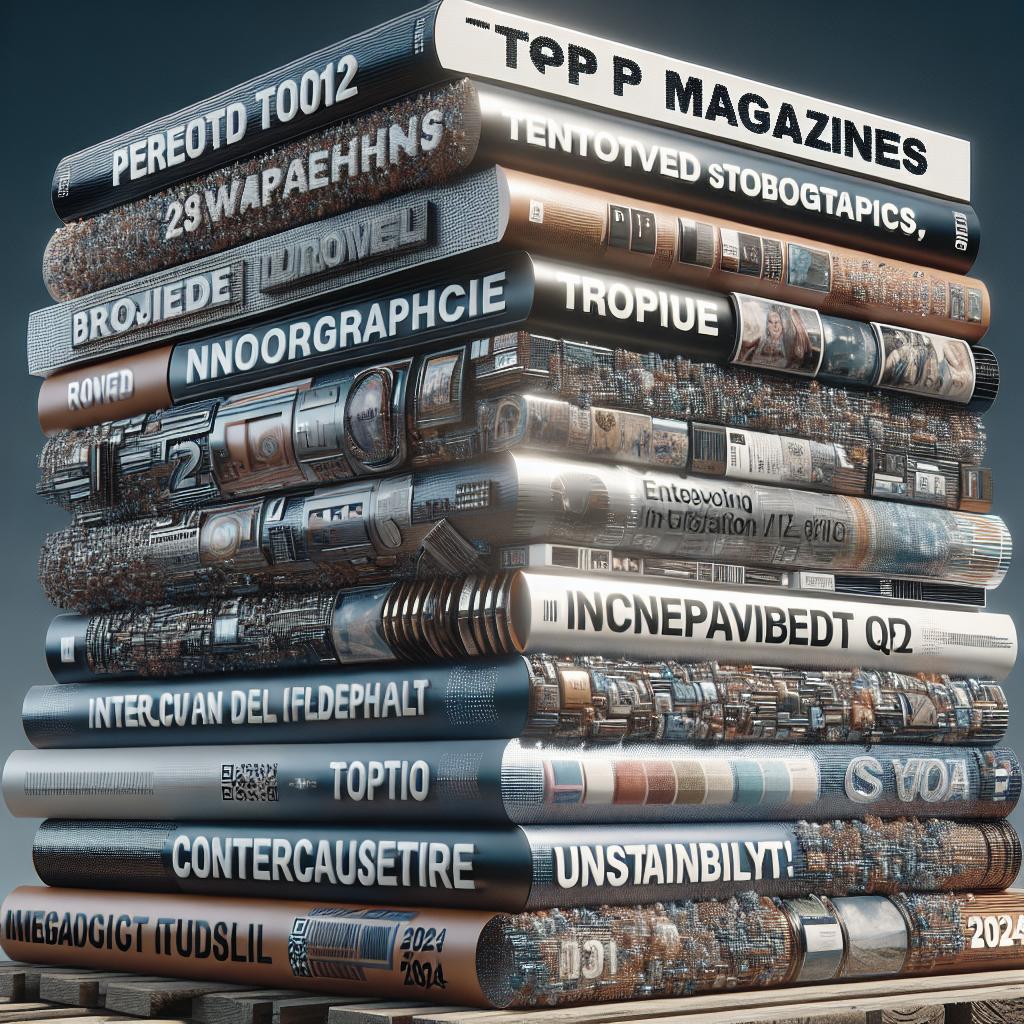Writing a magazine column can be an exhilarating journey where creative freedom meets structured guidance. Unlike casual blogging, crafting a magazine article demands a distinct approach, meticulous planning, and a deep understanding of your audience. This post will navigate you through the unique aspects of magazine writing, provide a versatile template, and break down the steps to develop a compelling column. You’ll also gain insight into different types of magazine articles, from informational pieces to think pieces, helping you pitch effectively to editors and fine-tune your narrative voice. Ready to go beyond the blog and make your mark in print? Let’s dive in.
How is Writing For a Magazine or Publication Different From Writing For a Blog?
Writing for a magazine or publication is a more formal and structured process compared to blogging. Magazines have established guidelines, including word count, style, and tone, and cater to a specific audience demographic. This means you need to adapt your writing to fit the publication’s voice, which requires extensive research into the magazine’s past articles to understand their style and approach. In contrast, blogging offers more flexibility and creative control, allowing you to write in your own voice without strict guidelines. Blogs can be more personal and less formal, often reflecting your personality and personal experiences. This freedom, however, means you may not have the same level of editorial support that a magazine provides, and your audience might be more varied and less defined.
Magazine Article Template to Use
Having a template is crucial for consistency and efficiency when writing a magazine article. A reliable template includes several key components: a compelling headline, an engaging introduction, a well-structured body, and a concise conclusion. Start with an attention-grabbing title that piques the reader’s interest and encapsulates the article’s essence. The introduction should hook the reader with an intriguing premise, a startling fact, or a thought-provoking quote. The body of the article should be divided into clear subsections, each covering a different aspect of the topic. Using bullet points or subheadings can help break up the text and make it more digestible. Finally, wrap up with a strong conclusion that reinforces your main points and provides closure to the narrative.
How to Write a Magazine Article
1. Target Your Pitches
The first step in writing a magazine article is to target your pitches. Research various publications to find the ones that align with your writing style and interests. Familiarize yourself with their content and identify the types of stories they publish. Craft a compelling pitch that clearly outlines your article’s concept and why it’s a perfect fit for that magazine. Personalize your pitch by addressing the editor by name and showing that you’ve done your homework on the publication. Highlight your credentials and past writing samples that demonstrate your ability to deliver high-quality work. A well-targeted pitch increases your chances of getting accepted and sets a professional tone for your potential collaboration.
2. Write an Article Summary Outline
Before diving into writing, create a summary outline of your article. This outline should include the main points you plan to cover, organized in a logical sequence. Start with the introduction, followed by the main body divided into subsections, and conclude with a summary of key points. An outline acts as a roadmap, ensuring that your article flows smoothly and covers all necessary aspects of the topic. It also helps you stay focused and avoid tangents that could dilute the main message. Share the outline with the editor (if required) to get their feedback and make any necessary adjustments before proceeding.
3. Research…Then Research Some More
Thorough research is crucial when writing a magazine article. Gather information from reputable sources, such as academic journals, industry reports, and expert interviews. Look for current data and trends to ensure your article is timely and relevant. Don’t hesitate to go the extra mile in your research. The more informed you are, the more authoritative and insightful your article will be. Cross-check facts to avoid inaccuracies and cite your sources where necessary. This not only adds credibility to your writing but also builds trust with your readers.
4. Think About the Magazine’s Target Audience
Understanding the target audience of the magazine is essential in crafting a successful article. Consider the demographics, interests, and preferences of the readers. Tailor your writing style, tone, and content to resonate with them. For instance, if you’re writing for a tech magazine aimed at professionals, use technical language and industry jargon that the readers are familiar with. However, if the publication targets a general audience, simplify complex concepts and avoid overly technical terms. Connecting with the audience on their level enhances engagement and ensures your message is well-received.
5. Write an Attention-Grabbing Title
The title of your article is the first impression readers get, so it needs to be attention-grabbing and compelling. A good title should be clear, concise, and intriguing. It should give a hint of what the article is about while sparking curiosity. Experiment with different title formats, such as questions, lists, or provocative statements. For example, “The Future of AI: 5 Innovations Shaping Our World” or “How to Boost Your Productivity: 10 Proven Strategies.” Make sure the title accurately reflects the content of the article to avoid misleading readers.
Types of Magazine Articles
Informational Pieces
Informational pieces are articles that provide readers with detailed knowledge on a specific topic. These articles are fact-based and often include data, statistics, and expert opinions. They aim to educate the reader on a subject, offering a comprehensive overview. When writing an informational piece, focus on clarity and accuracy. Break down complex ideas into simpler terms and use visual aids like charts or infographics to enhance understanding. The goal is to leave the reader well-informed and more knowledgeable about the subject.
How-To Articles
How-to articles offer step-by-step instructions for completing a task or achieving a specific goal. These pieces are highly practical and focused, providing actionable advice that readers can immediately apply. To write a successful how-to article, clearly outline the steps involved and provide detailed explanations for each. Use bullet points, numbered lists, and subheadings to make the content easy to follow. Including images or diagrams can further enhance clarity and effectiveness.
First-Person Pieces
First-person pieces are personal narratives that draw on the writer’s own experiences and insights. These articles are often reflective and introspective, providing readers with a unique perspective on a particular topic or issue. When writing a first-person piece, focus on authenticity and emotional resonance. Share your personal journey, including challenges, triumphs, and lessons learned. Use a conversational tone to connect with readers on a personal level, making the story relatable and engaging.
Article Reviews
Article reviews offer a critical analysis of a product, service, or creative work, such as a book, movie, or gadget. These pieces evaluate the subject based on specific criteria, providing readers with an informed opinion. To write an effective review, start by clearly stating what you’re reviewing and provide some background information. Evaluate the subject’s strengths and weaknesses, and support your opinions with evidence. Be honest and fair, and consider the needs and preferences of your audience when forming your conclusions.
Opinion Pieces
Opinion pieces are articles where the author expresses their viewpoint on a particular issue or topic. These pieces often aim to persuade or provoke thought, inviting readers to consider a new perspective. When writing an opinion piece, build a strong argument supported by facts, examples, and logical reasoning. Address counterarguments and provide a well-rounded discussion. Use a confident and assertive tone, but remain respectful and open to differing viewpoints.
Think Pieces
Think pieces are in-depth articles that explore complex ideas, trends, or issues. These pieces often involve critical analysis and thoughtful reflection, aiming to provide readers with a deeper understanding of the subject. To write a compelling think piece, start with a clear thesis or central question. Explore different angles and perspectives, and draw on a wide range of sources and evidence. Encourage readers to think critically and reflect on the implications of the topic.
Go Wow Some Editors!
With these insights and strategies in hand, you’re well-prepared to write magazine columns that captivate both editors and readers. Remember, the key to success lies in targeted pitches, thorough research, audience awareness, and engaging writing. Stay adaptable and open to feedback, and continually refine your craft. Whether you’re writing informational pieces, how-to guides, first-person narratives, reviews, opinion pieces, or think pieces, each article type offers a unique opportunity to showcase your writing skills and make an impact. If you found this guide helpful, don’t forget to share it with your friends and fellow writers!
Share this post with your friends!
“`html
| Section | Summary |
|---|---|
| Introduction | Overview of the blog post guiding you through writing a magazine article, including templates and types of articles. |
| How is Writing For a Magazine or Publication Different From Writing For a Blog? | Comparison of the formal, structured approach of writing for magazines with the flexible nature of blogging. |
| Magazine Article Template to Use | Structure of a magazine article, including title, introduction, body, and conclusion. |
| How to Write a Magazine Article | Steps for writing including targeting pitches, outlining, researching, considering audience, and crafting titles. |
| Types of Magazine Articles | Descriptions of various article types: informational, how-to, first-person, reviews, opinion, and think pieces. |
| Go Wow Some Editors! | Encouragement to apply the provided tips and start impressing editors with your well-crafted magazine articles. |
| Share this post with your friends! | Encouragement to share the informative blog post with others. |
“`


